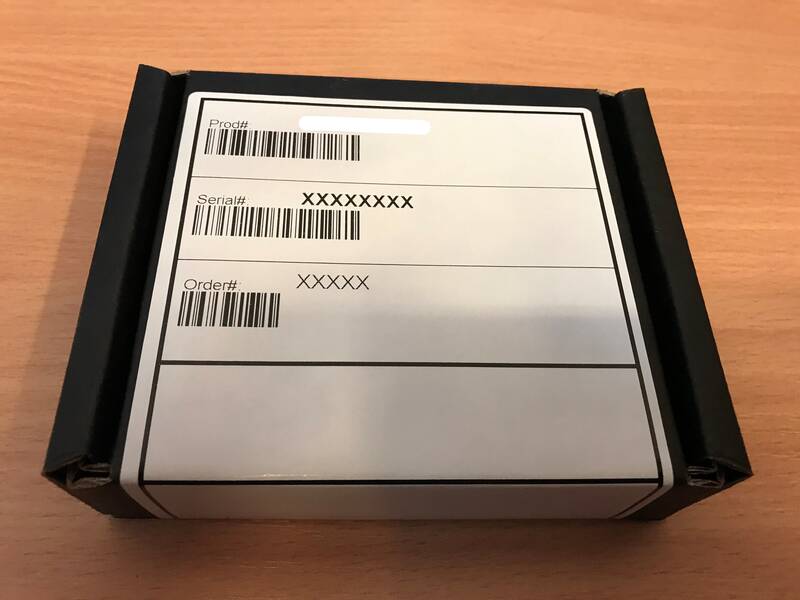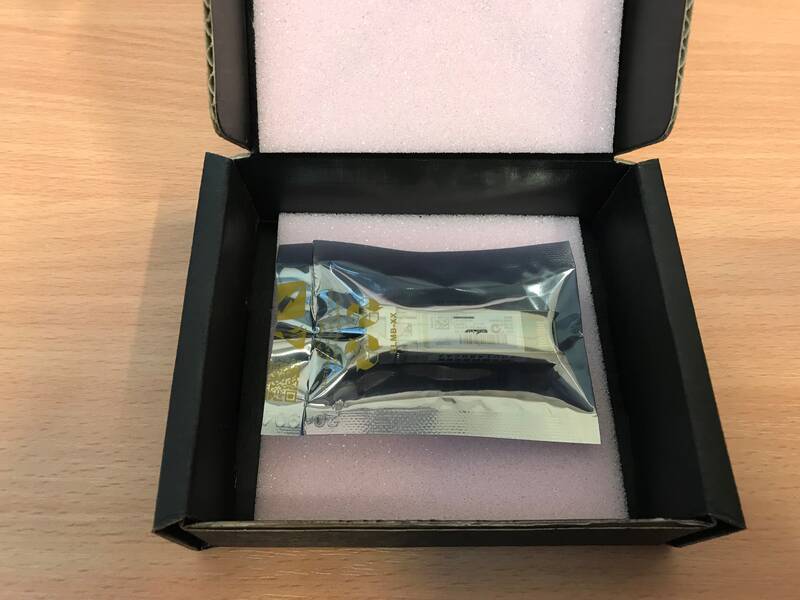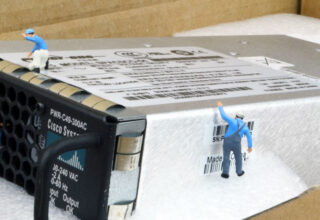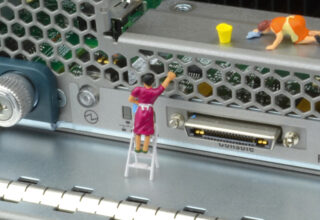CISCO Refurbished
- Manufacturer
- CISCO
- Condition
- Refurbished
- Lead Time
- 2-3 days
- Availability
- Not In Stock
- List Price/RRP
- US$9,100.00
- Price
- US$2,112.00 Enquire
Description
The GLC-FE-100BX-D48 is a small form-factor pluggable (SFP) transceiver module designed by networking supplier Cisco. It offers 100Base-BX connectivity (100Mbps Ethernet) and uses a single-mode fiber optic cable for transmission. The GLC-FE-100BX-D48 is compatible with Cisco's range of switches and routers, and offers a maximum cable distance of 10km. The module features a Digital Optical Monitoring (DOM) function, which provides real-time monitoring of the SFP's temperature, voltage, and optical output power. It also supports bidirectional communication over a single strand of fiber, through the use of wavelength-division multiplexing (WDM) technology.The GLC-FE-100BX-D48 is an ideal solution for organizations requiring high-speed connectivity over long distances. It allows for the deployment of cost-effective, high-performance Ethernet connections without the need for expensive fiber optic cabling. Additionally, its DOM functionality helps ensure network uptime and simplifies troubleshooting. With its compatibility with Cisco hardware and support for WDM technology, the GLC-FE-100BX-D48 is a versatile and reliable solution for Ethernet connectivity over fiber.
- Part Code
- GLC-FE-100BX-D48
- Description
- 48 units of GLC-FE-100BX-D
- Weight
- 0.1kg
- Manufacturer
- CISCO
UNI/ENI/NNI Default Behaviors
Expand
UNI/ENI/NNI Default Behaviors
Features and Benefits
Expand
Features and Benefits
E-LMI enables service providers to communicate service configuration and status information to the customer-edge device. Ethernet in the First Mile OAM&P (802.3ah) provides support for monitoring, remote failure indication, loopback, and OAM discovery on the link between the customer equipment and service provider network.
Traffic loopback allows quick service activation and verification.
Carrier-class redundancy features (Flexlink, RSTP, REP) support both hub-and-spoke and ring networks.
2-rate 3-color policer allows service providers to provide more flexible control on incoming traffic rate.
1:1 VLAN mapping gives service providers the flexibility to translate customer VLAN ID into a service provider VLAN ID to support overlapping customer VLAN IDs.
Selective QinQ (1:2 VLAN mapping) enables service providers to multiplex multiple services on a single UNI (MEF EVPL for example).
Inner-to-outer CoS value propagation for QinQ helps ensure that customer QoS setting is honored in the service provider network.
L2PT allows for transport of the customer’s control protocols, thereby allowing for transparency across the service provider’s shared infrastructure.
IEEE 802.1w Rapid Spanning Tree Protocol (RSTP) provides rapid spanning-tree convergence independent of spanning-tree timers and offers the benefit of distributed processing.
Per-VLAN Rapid Spanning Tree (PVRST+) allows rapid spanning-tree reconvergence on a per-VLAN spanning-tree basis, without requiring the implementation of spanning-tree instances.
Cisco Hot Standby Router Protocol (HSRP) is supported to create redundant, fail-safe routing topologies.
Unidirectional Link Detection Protocol (UDLD) and Aggressive UDLD allow unidirectional links caused by incorrect fiber-optic connections or port faults to be detected and disabled on fiber-optic interfaces.
Flexlink provides fast failover of ports without overhead of control protocols such as the Spanning Tree Protocol.
Switch-port autorecovery (errdisable) automatically attempts to reactivate a link that is disabled because of a network error.
Equal-cost routing provides for load balancing and redundancy.
Bandwidth aggregation up to 8 Gbps through Cisco EtherChannel technology enhances fault tolerance and offers greater aggregated bandwidth between switches and to routers and individual servers.
Link-State Tracking helps accelerate Layer 3 reconvergence by taking UNI down when the associated NNI is down.
Resilient Ethernet Protocol (REP) provides fast Layer 2 reconvergence in a ring network and offers an alternative to Spanning Tree Protocol.
PIM-SM provides efficient routing of multicast traffic by establishing distribution trees across WANs.
Source Specific Multicast (SSM) reduces the need for IP Multicast address management and prevents DoS attacks against receivers.
SSM mapping provides a mapping of source to group, which allows listeners to find/connect to multicast sources dynamically, reducing dependencies on the application.
2-rate 3-color policer enables service provider to provide more flexible QoS offerings.
Standard 802.1p class of service (CoS) and differentiated services code point (DSCP) field classification are provided, using marking and reclassification on a per-packet basis by source and destination IP address, source and destination MAC address, VLAN ID, or Layer 4 TCP/UDP port number.
Cisco control-plane and data-plane QoS ACLs on all ports help ensure proper marking on a per-packet basis.
Shaped Round Robin (SRR) scheduling helps ensure differential prioritization of packet flows by intelligently servicing the queues.
Weighted Tail Drop (WTD) provides per QoS class congestion avoidance at the queues before a disruption occurs.
Strict priority queuing helps ensure that the highest-priority packets are serviced ahead of all other traffic.
Priority queue rate limiting provides optional protection against lower-priority queue starvation.
Configurable control plane queue assignment allows service providers to assign control plane traffic to specific egress queue.
Prioritization of control plane traffic enables service providers to set QoS markings globally for CPU-generated traffic so these protocol packets will receive priority in the network.
There is no performance penalty for advanced QoS functions.
Cisco Service Assurance Agent (SAA) provides service-level management throughout the network.
IEEE 802.1ag Connectivity Fault Management provides standard support for transport fault management. It allows for discovery and verification of path for Layer 2 services.
Ethernet Local Management Interface enables service providers to communicate service configuration and status information to the customer-edge device IEEE 802.3ah Ethernet in the First Mile provides standard support for monitoring, remote failure indication, loopback, and OAM discovery on the link between the customer equipment and service provider network.
ITU-T Y.1731 introduces the support for fault management functions, including alarm indication signal (AIS), remote defect indication (RDI) and locked signal (LCK) to detect and signal a failure in the service path.
The Cisco ME 3400E Series supports ITU-T Y.1731 Performance Monitoring function to measure frame delays in the network.
Switching Database Manager templates for Layer 2 and Layer 3 deployment allow administrators to easily optimize memory allocation to the desired features based on deployment-specific requirements.
VLAN trunks can be created from any port, using standards-based 802.1Q tagging. Up to 1005 VLANs per switch and up to 128 spanning-tree instances per switch are supported.
4096 VLAN IDs are supported.
RSPAN allows administrators to remotely monitor ports in a Layer 2 switch network from any other switch in the same network.
For enhanced traffic management, monitoring, and analysis, the embedded Remote Monitoring (RMON) software agent supports four RMON groups (history, statistics, alarms, and events).
Layer 2 traceroute eases troubleshooting by identifying the physical path that a packet takes from source to destination.
All nine RMON groups are supported through a SPAN port, permitting traffic monitoring of a single port, a group of ports, or the entire stack from a single network analyzer or RMON probe.
Domain Name System (DNS) provides IP address resolution with user-defined device names.
Trivial File Transfer Protocol (TFTP) reduces the cost of administering software upgrades by downloading from a centralized location.
Network Timing Protocol (NTP) provides an accurate and consistent time stamp to all intranet switches.
The Cisco ME 3400 Series supports the Cisco CNS 2100 Series Intelligence Engine and SNMP for networkwide management.
Cisco ISC applications help reduce administration and management costs by providing automated resource management and rapid profile-based provisioning capabilities.
Configuration Rollback helps in error recovery by providing the capability to replace the current running configuration with any saved Cisco IOS configuration file.
Embedded Events Manager (EEM) offers the ability to monitor events and take user-defined action when the monitored events occur or a threshold is reached.
Dynamic Host Configuration Protocol (DHCP)-based auto configuration and image update simplifies management of large number of switches by automatically downloading specified configuration and image.
Service Diagnostics automates a set of network diagnostic procedures derived from the vast troubleshooting experiences of Cisco network experts. These diagnostic tools help customers increase network uptime, reduce time to repair and improve service levels.
Digital optical monitoring (DOM) support enable service providers to perform in-service transceiver monitoring and troubleshooting operations. DOM threshold functions allow the monitoring of real time optical parameters on DOM SFPs and the comparison against factory-reset values, generating alarm and warning thresholds.
SNMP Versions 1, 2c, and 3 and Telnet provide comprehensive in-band management, and a CLI-based management console provides detailed out-of-band management.
Cisco Discovery Protocol Versions 1 and 2 help enable automatic switch discovery for a CiscoWorks network management station.
CiscoWorks 2000 LAN Management Solution is supported.
Product Specifications
Expand
Product Specifications
Cisco ME 3400EG-12CS AC or DC: 32 Gbps
Cisco ME 3400EG-2CS AC: 8 Gbps
Cisco ME 3400E-24TS, AC or DC: 8 Gbps
Forwarding rate:
Cisco ME 3400EG-12CS, AC or DC: 26 mpps
Cisco ME 3400EG-2CS AC: 6.5 mpps
Cisco ME 3400E-24TS, AC or DC: 6.5 mpps
128 -MB DRAM and 32 MB flash memory
Configurable up to 8000 MAC addresses
Configurable up to 5000 unicast routes
Configurable up to 1000 IGMP groups and multicast routes
Configurable maximum transmission unit (MTU) of up to 9000 bytes, for bridging on Gigabit Ethernet ports, and up to 1998 bytes for bridging and routing on Fast Ethernet ports
10/100BASE-TX ports: RJ-45 connectors, 2-pair Category 5 unshielded twisted pair (UTP) cabling
SFP Ports:
1000BASE-T SFP-based ports: RJ-45 connectors, 4-pair Category 5 UTP cabling, 10/100/1000BASE-T operation in host systems with SGMII interface
100BASE-FX and -LX: Duplex LC receptacle fiber connectors (multimode and single-mode)
100BASE-BX: Single-fiber LC receptacle connector (single-mode fiber)
1000BASE-EX: Single Mode Fiber with DOM support
100BASE-EX: SFP module for 100 Mb port, 1310 nm wavelength, 40 km over single-mode fiber
100BASE-ZX: SFP module for 100 Mb port, 1550 nm wavelength, 80 km over single-mode fiber
1000BASE-BX: Single-fiber LC receptacle connector (single-mode fiber)
1000BASE-SX, -LX/LH, and -ZX and CWDM and DWDM: Duplex LC receptacle fiber connectors (multimode and single-mode fiber)
Cisco Catalyst 3560 SFP Interconnect Cable
Management console port: RJ45-to-DB9 cable for PC connections
System-status LED
Cisco ME 3400EG-12CS-M with AC or DC: 1.75 x 17.5 x 12.5 in. (4.45 x 44.5 x 31.8 cm)
Cisco ME 3400EG-2CS AC: 1.73 x 10.6 x 7.2 in. (4.4 x 26.9 x 18.3 cm)
Cisco ME 3400E-24TS-M: 1.75 x 17.5 x 9.3 in. (4.45 x 44.5 x 23.6 cm)
Cisco ME 3400E-24TS-M with AC or DC: 1.75 x 17.5 x 9.8 in. (4.45 x 44.5 x 24.9 cm)
Cisco ME 3400EG-2CS AC: 3.4 lb (1.5 kg)
Cisco ME 3400E-24TS-M: 6.4 lb (2.9 kg)
Cisco ME 3400E AC field-replaceable unit with two integrated fans: 1.7 lb (0.77 kg)
Cisco ME 3400E DC field-replaceable unit with two integrated fans: 1.8 lb (0.82 kg)
Cisco ME 3400E field-replaceable unit slot cover: 0.3 lb (0.14 kg)
Cisco ME 3400EG-2CS AC: 526,490 hours
Cisco ME 3400E-24TS with one AC or one DC: 245,917 hours
Cisco ME 3400E-24TS with two AC or two DC: 462,163 hours
Power Specifications
Expand
Power Specifications
Cisco ME 3400EG-12CS-M, two AC: 60W (typical), 95W (maximum), 205 Btus per hour (typical)
Cisco ME 3400EG-12CS-M, one DC: 60W (typical), 99W (maximum), 205 Btus per hour (typical)
Cisco ME 3400EG-12CS-M, two DC: 70W (typical), 115W (maximum), 239 Btus per hour (typical)
Cisco ME 3400EG-2CS AC: 22W (typical), 30W (maximum), 75 Btus per hour (typical)
Cisco ME 3400E-24TS-M, one AC: 36W (typical), 40W (maximum), 123 Btus per hour (typical)
Cisco ME 3400E-24TS-M, two AC: 38W (typical), 54W (maximum), 130 Btus per hour (typical)
Cisco ME 3400E-24TS-M, one DC: 38W (typical), 48W (maximum), 130 Btus per hour (typical)
Cisco ME 3400E-24TS-M, two DC: 48W (typical), 72W (maximum), 164 Btus per hour (typical)
Safety and Compliance
Expand
Safety and Compliance
EN 55022 Class A (CISPR22 Class A)
EN 55024
EN 300 386
GR-1089 CORE Issue 4
GR-63 CORE Issue 3
VCCI Class A
AS/NZS 3548 Class A or AS/NZS CISPR22 Class A
KCC
CE Marking
CUL to CAN/CSA 22.2 No.60950-1, First Edition
TUV/GS to EN 60950-1
CB report/certificate to IEC 60950 with all country deviations
NOM to NOM-019-SCFI (through distributors)
CE Marking
CLEI Coding
48 dBA (sound pressure)
4.8 bels (sound power)
EN 300 753
Altitude: Up to 13,000 ft (4000m)
Relative humidity: 10 to 95% noncondensing
Altitude: 15,000 ft (4570 m)
ME3400E Series Temperature Range
Expand
ME3400E Series Temperature Range
Refurbished CISCO GLC-FE-100BX-D48 datasheet
Download PDF
Product datasheet - 1
Download PDF - 632.272 KB
Product datasheet - 2
Download PDF - 423.899 KB
Why Buy Refurbished?
Why Go Communications?
Related Products
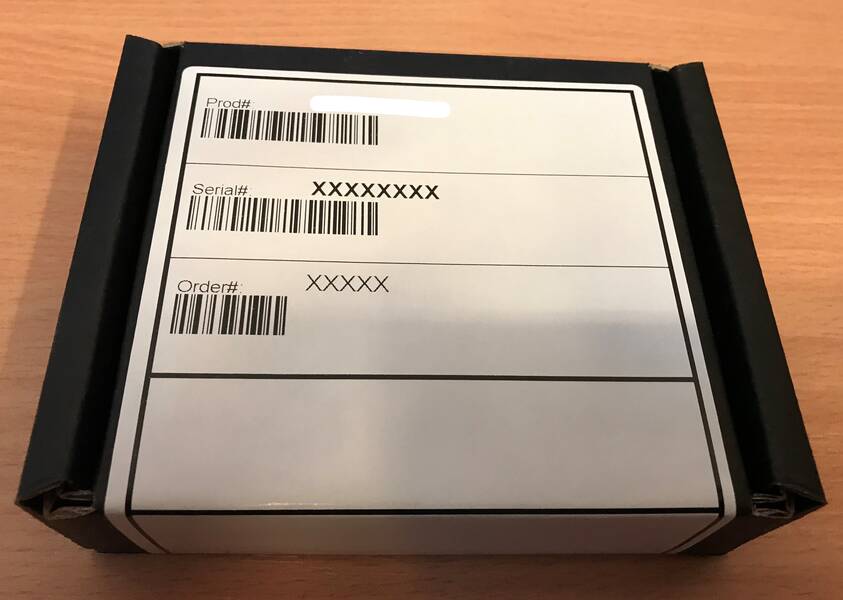
GLC-FE-100BX-D
100BASE-BX10-D SFP
GLC-FE-100BX-D
- List Price/RRP:
- US$450.00
- Price:
- US$35.00
- Availability:
- In Stock

